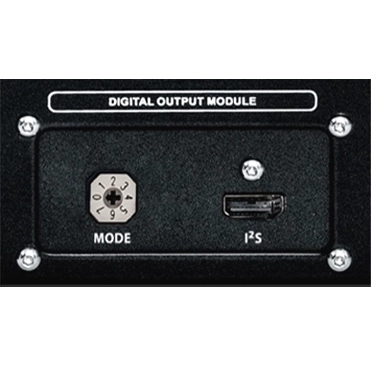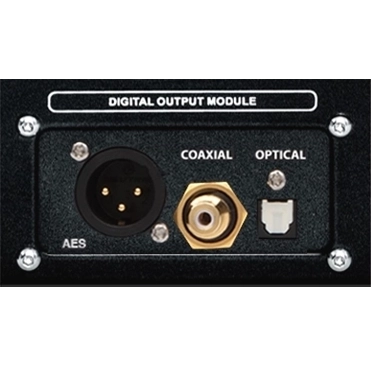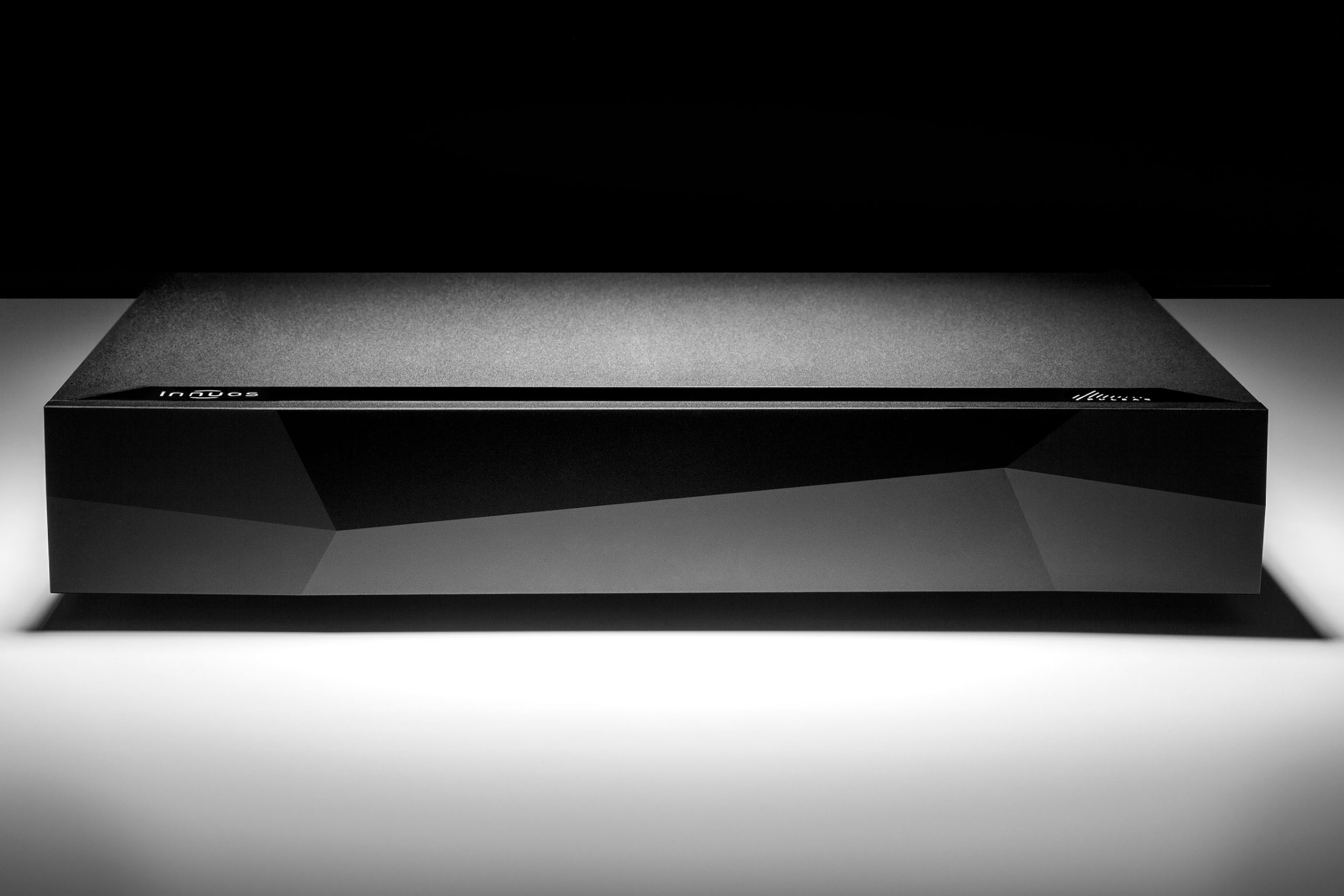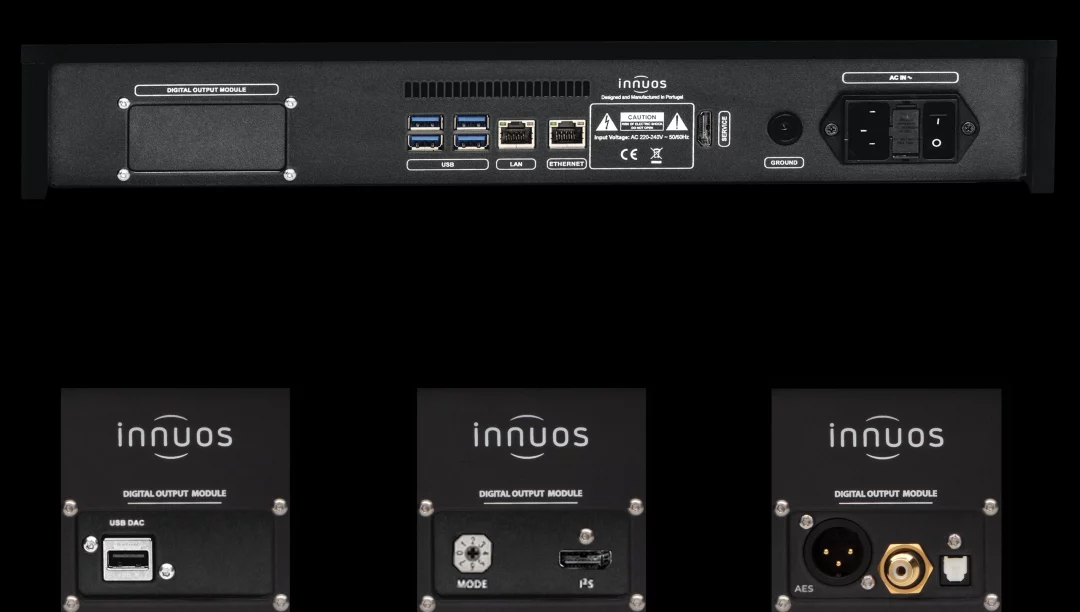Discontinued Product

Main Features
Oversized Toroidal Transformer
The PULSAR uses an oversized 300VA audio-grade toroidal transformer to provide a large headroom against transformer core saturation. With additional magnetic screening, coated SYN-SHIELD copper tape between windings and wrapped in Mylar black tape it is thoroughly shielded. To dampen vibration that can affect the electronics, and consequently sound, the transformer has an epoxy-filled center and is mounted on a vibration-dampened platform.
ARC6 Rectification Stage
The heart of the PULSAR is its innovative ARC6 Linear Power Supply, co-developed with Dr. Sean Jacobs. The ARC6 uses an Active Rectification MOSFET instead of passive Schottky diodes for both more efficiency and lower high-frequency noise. With a generous 132 000 uF of Mundorf capacitor bank and a low DCR choke, it ensures an extremely clean power source for the components.
Separate Regulation Stages
The PULSAR has three independent power rails: one for the main board, one for the Output Module, and one for the SSD. This isolation minimizes noise cross-ontamination between the components. Each rail is regulated using the CX pre-filter circuit, which acts to reduce voltage ripple and noise before it is fed into the ultra-low noise regulators. The less noise fed into a regulator circuit, the better-performing it will be. All this makes for cleaner power to each component and helps reveal blacker backgrounds, more detail and dimension.
Custom Mainboard
The PULSAR features a custom-made quad-core mainboard that has been specifically designed for Innuos, removing sources of EMI and having extensive customization of the features such as clock speeds, latency and memory access to name just a few. This reduces drastically the amount of power noise produced by the mainboard further contributing to the PULSAR’s smooth yet detailed sound signature.
Optional Digital Output Modules
In Hi-Fi, one size does not fit all. As such, you can choose the highest performing output modules to match your system or use the existing USB output. You can choose between the PhoenixUSB Lite module for a high performance USB output, PhoenixI2S Lite for I2S output via HDMI and SPDIF module for digital AES, coaxial and optical SPDIF
Ultra Low-Noise SSD
The SSD hosting the Sense Operating System in PULSAR is also upgraded to a SLC (Single-Level Cell) module, as opposed to the more common TLC (Triple-Level Cell) for the best durability and lower operating power noise.
High-Precision Chassis
The PULSAR chassis has been engineered to the same degree of quality and precision as our electronics. Featuring a 12mm thick CNC-machined (5 axis), bead-blasted and anodised aerospace-grade aluminium and laser-cut base, it’s assembled to a 0.1mm tolerance throughout and you can feel it. The on/off light pipe is precision-machined on the aluminium to allow reflection on the shelf so that you don’t get direct light to your eyes when you are listening to your music. The 3 vibration-treated feet strategically positioned to further dampen vibration on the chassis. All the small details that add up exuding quality and craftmanship.
Your music, played your way
Each PULSAR series Network Music Player has two modes:
In Standalone mode, the PULSAR becomes the center of your audio system, enabling you also to use the Sense app to play streaming services, Internet Radio and music stored on a NAS on the PULSAR and other network players in the network.
In Endpoint Mode, PULSAR connects to a main music server, be it an Innuos Music Server, Roon Core or HQ Player. The PULSAR will then show as a zone on the respective music server app and you can use your preferred app to browse and play music.
Optional Digital Output Modules

PhoenixUSB Board
- Regenerated and Reclocked USB signal to your Class 2 USB DAC, greatly increasing sound quality
- High-precision 3ppb 24MHz OCXO clock for greatly improved timing and signal integrity
- Ultra-low noise LT3045 linear regulators for each independent voltage, no switching regulators on main USB chip
- Provides a pristine 5V line for the USB connection on your DAC

PhoenixI2S Board
- Bypass conversion stages with a direct connection straight to your DAC chip
- 3ppb 24Mhz main clock, with two premium FemtoClocks
- HDMI connector with 8 pin-configurations.
- Ensure maximum audio resolution compatibility up to DSD1024

SPDIF Board
- Provide a superior SPDIF Coaxial, Optical and AES outputs for your DAC
- Supports PCM up to 24bit/192KHz
- Optimised power supply for ultra-low noise
- High-Quality Gold-plated Connectors
EUR €
| No Modular Output Board | € 5299 |
GBP £
| No Modular Output Board | £ 4799 |
USD $
| No Modular Output Board | $ 6649 |
CAD $
| No Modular Output Board | $ 8749 |
EUR €
| SPDIF Board | + € 650 |
| PhoenixUSB Board | + € 1 200 |
| PhoenixI2S Board | + € 1 700 |
GBP £
| SPDIF Board | + £ 630 |
| PhoenixUSB Board | + £ 1 100 |
| PhoenixI2S Board | + £ 1550 |
USD $
| SPDIF Board | + $ 880 |
| PhoenixUSB Board | + $ 1 650 |
| PhoenixI2S Board | + $ 2 250 |
CAD $
| SPDIF Board | + $ 1 050 |
| PhoenixUSB Board | + $ 2 050 |
| PhoenixI2S Board | + $ 2 800 |
Controlled via Innuos Sense App
Sense delivers optimal music playback with the following features:

Specifications
AUDIO OUTPUTS
| Digital Output | 4 x USB 3.0 (Up to 32bit/768KHz, Up to DSD256 via DoP, Up to DSD512 via Native DSD) |
| Optional Digital Output Modules | SPDIF Board Adds 1 x AES, 1 x Coaxial, 1 x Optical (Up to 24bit/192KHz PCM) PhoenixUSB Lite Board Adds 1 x Reclocked USB 2.0 Output (Up to 32bit/768KHz PCM, Up to DSD256 via DoP, Up to DSD512 via Native DSD) PhoenixI2S Lite Board (Up to 32bit/768KHz PCM, Full DSD support up to Native DSD1024) |
CONNECTIVITY
| Ethernet | 2 x rear panel RJ45 – Bridged Gigabit Ethernet |
| USB | 4x USB 3.0 |
FORMATS
| Audio Formats Supported for streaming and playing | WAV, AIFF, FLAC, ALAC, AAC, MP3, MQA |
ENDPOINT MODE
| Endpoint Mode | Connects to Innuos Music Servers, Logitech Media Server based Servers or HQPlayer Server |
USER CONTROL INTERFACES
| Web Interface | Modern Web Browsers from iOS, Android, Windows and Mac OS |
| Mobile | Innuos Sense App (iOS/Android/Kindle Fire) |
HARDWARE
| CPU | Intel Quad Core N4200 |
| Memory | 8GB DDR3 Low-Voltage RAM (4GB Dedicated for RAM Playback) |
STREAMING AND DAC SUPPORT
| UPnP/DLNA | Controls selected UPnP streamers as endpoints via Sense |
| Streaming Services | Internet Radio, Qobuz, HighResAudio, Deezer, Radio Paradise, Tidal |
| USB DAC Support | USB DACs complying to USB Audio Class 2 |
| USB DACs supporting DSD over DoP protocol | |
| Selected USB DACs supporting Native DSD |
REQUIREMENTS
| Network | Internet connection to access Internet Radio, Streaming Services and software updates |
| Network router with at least one available ethernet port | |
| Premium subscription required for some streaming services such as Spotify, Qobuz and TIDAL |
POWER
| Mains Supply | 230V AC / 115V AC |
| Power Consumption (Idle) | 7W |
| Power Consumption (Peak)
Standalone mode |
13.7W |
PHYSICAL
| Dimensions | 420mm x 290mm x 76mm (W x D x H) |
| Weight | 10,17 kg (11,5 kg boxed) |
| In the box | Innuos PULSAR Network Player |
| Mains Cable | |
| 2m Ethernet Cable | |
| Quick Start Guide |
News, Reviews and Awards
PULSAR - 2025’s Best Digital Audio - Buyers Guide 2025
``It’s so smooth in operation that our reviewer kept the PULSAR as a reference streamer``
Part-Time Audiophile

PULSAR
``The Innuos Pulsar is a great overall package. It combines a first-class and heavily manufactured chassis with intuitive app control based on proprietary software, which offers the flexibility to use solutions such as HQ Player and Roon in addition to your own. Above all, however, this streaming bridge convinces with its sonic appearance.``
Ralph Werner, Fairaudio
Innuos PULSAR
``This is the best-sounding USB audio output at this price point, with quiet background, and lively sound``
Ken Wong, feverSound
(Mandarin)
Innuos PULSAR
“Listeners in pursuit of a pure streamer with top-level User Interface should really investigate Innuos PULSAR”
Dawid Gryzb, HiFi Knights
HiFI+
``We found the PULSAR delivers outstanding sound quality with robustbass, clear vocals, and intricate detail in our test``
Innuos PULSAR distinguished with the Hi-Fi+ Editor’s Choice 25th Anniversary Award

Innuos Pulsar Network Streamer
``What the Innuos PULSAR does, perhaps better than any other digital audio product I’ve used, is provide a quiet–dare I say silent–platform for the music”.
Marc Phillips, Part-Time Audiophile
Innuos Pulsar: star quality
``The Pulsar is a vivacious and thrilling streamer with all manner of music...The finest dedicated streamer in the Innuos catalogue is a high resolution device that’s capable of superb results with the right ancillaries, it sounds excellent with a good recording on Qobuz and even better with the same thing on a music server. Add in the quality of the Sense control app and you have a strong contender at a reasonable price.``
Jason Kennedy, The Ear
Innuos Introduces the Pulsar
``Vitorino cued up a 24/ or 32/352.8 MQA file of Patricia Barber's version of ``This Town`` from her album Clique. The Pulsar worked in consort with the room's other components to reproduce instruments and voice in correct proportion. Every note from the piano sang, and cymbals sounded realistic rather than overly hot. In a convincing comparison between the unit's standard USB output and dedicated USB output with reclocking, the dedicated output delivered larger scale images, more detail and texture, and put Barber closer to her mike and the audience. An excellent system.``
Jason Victor Serinus , Stereophile
Innuos PULSAR Streamer
``The Innuos PULSAR is a fantastic streamer for those who have left CD ripping
behind``
Alan Sircom, Hi-Fi +

Online Resources
Already have a PULSE? Congratulations. If you're having troubles with configurations or don't know where to start, we have a support area with online resources to help you out.
Hear For Yourself
Want to hear a PULSE before making a decision? Visit an Innuos Authorized Dealer to arrange a demonstration today. You can find one near you on our dealer locator.
Got ideas? Tell us about them!
At Innuos we love to listen - to music, and to you. If you've got an idea about how to improve our products, we invite you to visit our Feedback Zone. There you'll find other suggestions or you can submit your own.
FAQs
What does the ARC6 Module do?
The ARC6 is the part of the power supply that converts AC mains power to DC. It uses an Active Rectification board to convert AC to DC instead of passive Schottky diodes used in the RECAP2 module on the PULSE. Aside from being far more efficient and causing less heat and ripple, it has the advantage of lower the impedance of the power supply, which has an audible effect on sound quality. In order to support this lower impedance, it needs a larger capacitor bank using 6 Mundorf Capacitors. Hence the name ARC6 (Active Rectification with 6 Capacitors). The PULSAR uses a trickle-down version of the ARC6 modules on the STATEMENT with Next-Gen power supply.
Why are there two RJ45 sockets?
The second port is present on all PULSE series streamers and can be used to connect another network-based device as the port is bridged with the main LAN port. This is useful if you use a NAS for example, where instead of running two cables from the router, you can run a single cable to the PULSAR and then a smaller cable from the PULSAR to the NAS.
How does PULSAR differ from PULSE and PULSEmini?
- Compared to the PULSE, the PULSAR has a much improved power supply: 300VA toroidal, compared to 120VA on PULSE. PULSAR’s active rectification module has a 3x larger capacitor bank, much larger inductor and two regulator modules providing separate rails to the SSD and to the Digital Output Module.
- PULSAR has a higher-performing audio output stage thanks to the Digital Output Module facility, allowing for the optional installation of a dedicated output board with your preferred choice of connection, including options for re-clocked PhoenixUSB, PhoenixI2S or SPDIF. This also allows you to adapt your specialised output stage as your HiFi system changes and evolves.
- PULSAR also uses an SLC-type SSD where each storage cell contains a single bit compared to a TLC on PULSE and PULSEmini where each cell stores 3 bits – this means the access mechanism is more complicated resulting in higher latency and power noise.
- Finally, the chassis on the PULSAR is all around high-precision CNC machined aluminium, bead-blasted and anodised.
- All of these details add up to produce peak streaming music enjoyment in its class.
What does the Backup function do since PULSAR doesn't have a storage drive?
A backup made on a PULSE series device will protect your Music Library Database which includes all your favourites and Sense playlists, along with with other information such as artist biographies and radio presets.
Each streamer in the PULSE series lets you build your library from streamed content from multiple sources. Over time, you could have a large, well-managed library. If for any reason your database or device develops a problem, the Backup function will let you restore your library to the condition it was in at the last backup and is also a useful tool for transferring your library from one Innuos device to another.
Can I attach a USB drive with a library on it to the USB ports?
Yes, it is possible to connect a USB drive containing music files and play these through Sense app. This is designed as a more temporary solution, such as having a friend come to listen to your system and they have brought some of their music with them.
Due to many performance restrictions, leaving a USB drive permanently connected to be used as a constant library source is not viable. Not only would the USB drive negatively impact sound quality due to inserting noise directly onto the USB subsystem, but there is also an impact on the UX where rescanning and editing albums would be much slower and subject to issues and risks if you don’t unmount drives properly.
Therefore, files stored on an external USB drive will not have the same library integration, playlist construction, or data editing facilities that you would gain from having the files stored on a NAS drive, or better yet within one of our Music Servers.




